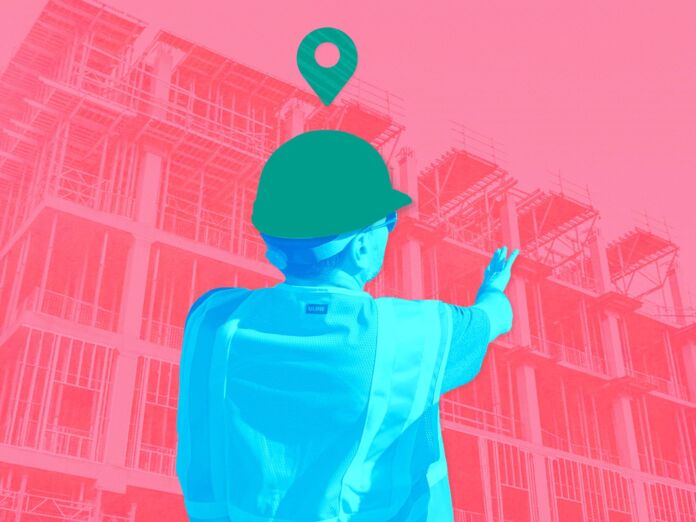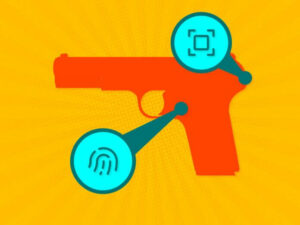
Historically, construction has not been the most tech-centric industry, but that is changing. In light of lengthy delays and skyrocketing costs, more firms are turning toward technologies like the Internet of Things (IoT) for help. As that trend has grown, many useful applications of IoT in construction have emerged. The use of IoT technologies in construction is still fairly new, but early use cases show significant promise. Here’s a look at five unique applications of this technology in the construction sector.
“In light of lengthy delays and skyrocketing costs, more firms are turning toward technologies like the Internet of Things for help.”
-Emily Newton
The Five Applications
#1: Wearables
Wearables are some of the most familiar IoT devices for many people, and one of the most helpful in construction. Devices like smart helmets and connected work boots are starting to populate construction sites, in turn boosting safety and efficiency.
More than one in five workplace deaths happen in the construction industry, but wearables can help by alerting workers to hazardous situations. Sensors in connected helmets can monitor heart rates and body temperature to recognize when employees are in danger of overexertion and notify them to take a break.
Proximity sensors can alert workers when they approach a fall hazard or heavy machinery, preventing accidents. Wearables also help construction teams remain efficient. These devices can provide location features, helping managers know where everyone is at all times. Data from these sensors can also reveal where the biggest inefficiencies occur, informing workflow changes.
#2: Safety Sensors
On-site or on-vehicle safety sensors are a similar application of IoT in construction with significant benefits. Just as wearables provide helpful safety information about workers, these devices can do the same for the worksite as a whole.
Roughly 75 percent of struck-by accidents involve heavy machinery. IoT sensors on this equipment can alert operators or automatically stop the machine if they get too close to another worker to prevent incidents.
Maintenance sensors can notify teams when equipment needs repair, helping prevent breakdowns or malfunctions that could endanger nearby employees. On-site IoT sensors can monitor for hazards like toxic fumes or high temperatures. When these readings reach dangerous levels, these systems alert employees so they can evacuate or pause their work, preventing accidents.
#3: Material Monitoring
Construction sites can also use IoT devices to monitor their materials. Concrete sensors are one of the most prominent examples. By placing connected sensors in concrete, construction teams can remotely check in on the curing process or see if it needs repair.
Because concrete curing can fluctuate with factors like temperature and humidity, there’s no guaranteed timeframe for it will finish. By monitoring the process with IoT devices instead, teams can ensure they don’t start work prematurely or wait too long, optimizing project completion timelines.
These same technologies can help monitor the infrastructure’s condition after project completion. Connected sensors can alert building owners or infrastructure authorities of cracks or weakening concrete in real time, letting them address it sooner to extend its life.
#4: Theft Prevention
Theft prevention is another growing application of IoT in construction. Construction sites are prime targets for thieves, given their expensive equipment and relatively low security. Now, as construction material costs are rising, this theft could grow, but IoT devices help fight it.
Connected drones can patrol worksites without needing a human security team. These machines can discourage would-be thieves as they fly around the site, and if someone does steal something, their video footage can help track them down.
Location sensors in equipment can help, too. IoT trackers can transmit a vehicle or tool’s location in real time without alerting the person who took it. Construction companies or police forces can then track down and recover the stolen goods.
#5: Waste Management
Construction teams also use IoT technologies to keep track of and minimize their waste. Construction and demolition operations generated 600 million tons of waste in 2018 alone, not counting wasted fuel or other energy.
IoT tracking provides the insight the industry needs to reduce that figure. Data from vehicle tracking systems can reveal inefficient usage patterns. Construction teams can then adjust as necessary, minimizing their fuel consumption. Applying similar systems to other equipment will yield the same benefits for energy usage.
IoT sensors can also monitor on-site waste levels, showing where excess debris comes from to guide less wasteful practices in the future. These systems help keep construction sites as clear as possible, too, improving safety and enabling more efficient operations on-site.
Applications Continue to Grow
These five examples are just a sample of the many applications of IoT in construction. As more companies invest in this technology, new use cases and benefits arise, too. And as these trends continue, the IoT could dramatically alter the future of the construction industry.
- SEO Powered Content & PR Distribution. Get Amplified Today.
- Platoblockchain. Web3 Metaverse Intelligence. Knowledge Amplified. Access Here.
- Source: https://www.iotforall.com/5-unique-applications-of-iot-in-construction
- :is
- 1
- 2018
- 7
- a
- About
- accidents
- address
- After
- Alert
- All
- alone
- and
- Another
- Application
- applications
- Applying
- approach
- ARE
- around
- AS
- At
- Authorities
- automatically
- benefits
- Biggest
- body
- boosting
- Boots
- Break
- Building
- by
- CAN
- cases
- Changes
- changing
- check
- clear
- Close
- Companies
- completion
- condition
- connected
- construction
- consumption
- continue
- Costs
- could
- curing
- DANGER
- Dangerous
- data
- delays
- Devices
- Dont
- down
- dramatically
- Drones
- Early
- efficiency
- efficient
- emerged
- employees
- enabling
- energy
- ensure
- equipment
- everyone
- examples
- expensive
- extend
- factors
- fairly
- Fall
- familiar
- Features
- fight
- Figure
- finish
- firms
- fluctuate
- For
- Forces
- from
- Fuel
- future
- generated
- get
- given
- goods
- Grow
- Growing
- grown
- guaranteed
- guide
- happen
- Have
- Heart
- heavy
- Helmets
- help
- helpful
- helping
- High
- HTML
- HTTPS
- human
- improving
- in
- industry
- inefficient
- information
- Infrastructure
- insight
- instead
- Internet
- internet of things
- Invest
- involve
- iot
- iot devices
- IT
- ITS
- jpg
- Keep
- Know
- letting
- levels
- Life
- light
- like
- location
- Long
- Look
- Low
- machine
- machinery
- Machines
- malfunctions
- Managers
- many
- many people
- material
- materials
- max-width
- million
- minimizing
- Monitor
- monitoring
- more
- more efficient
- most
- necessary
- needing
- needs
- New
- of
- on
- ONE
- Operations
- operators
- optimizing
- Other
- owners
- patterns
- People
- percent
- person
- placing
- plato
- Plato Data Intelligence
- PlatoData
- Police
- possible
- practices
- prevent
- preventing
- Prevention
- Prime
- process
- project
- prominent
- promise
- provide
- provides
- Rates
- reach
- real
- real-time
- recognize
- Recover
- reduce
- relatively
- remain
- repair
- reveal
- rising
- Safety
- same
- sector
- security
- sensors
- show
- significant
- similar
- site
- Sites
- situations
- smart
- So
- some
- Someone
- something
- start
- Starting
- Still
- stolen
- Stop
- Systems
- Take
- targets
- team
- teams
- Technologies
- Technology
- that
- The
- The Future
- theft
- their
- Them
- These
- things
- time
- timeframe
- times
- to
- tons
- too
- toward
- track
- Trackers
- Tracking
- transmit
- Trend
- Trends
- TURN
- Turning
- unique
- Usage
- use
- vehicle
- Video
- wait
- Waste
- wearables
- WHO
- will
- with
- without
- Work
- worker
- workers
- workflow
- Workplace
- Yield
- zephyrnet










